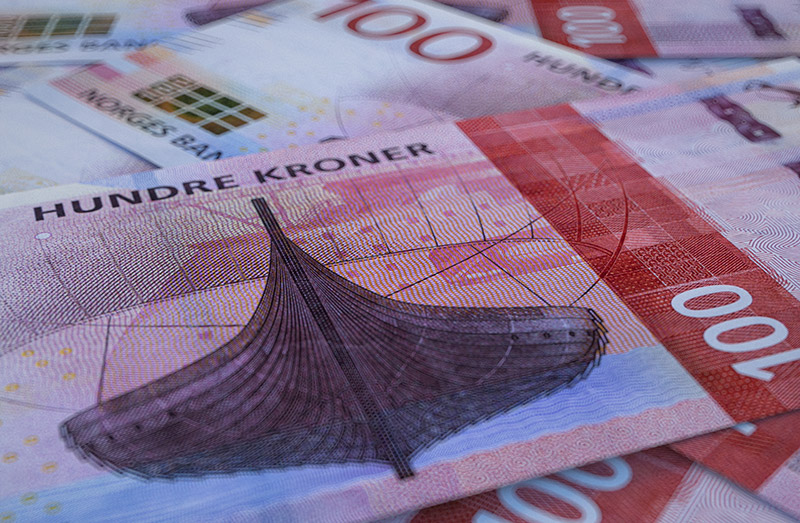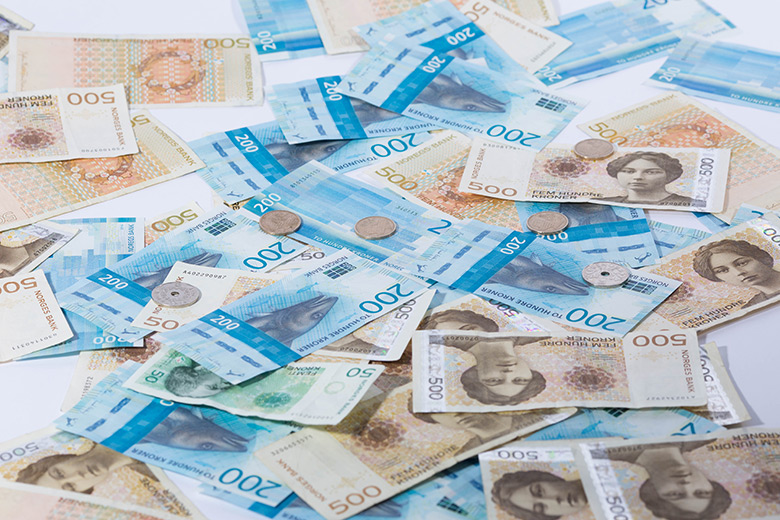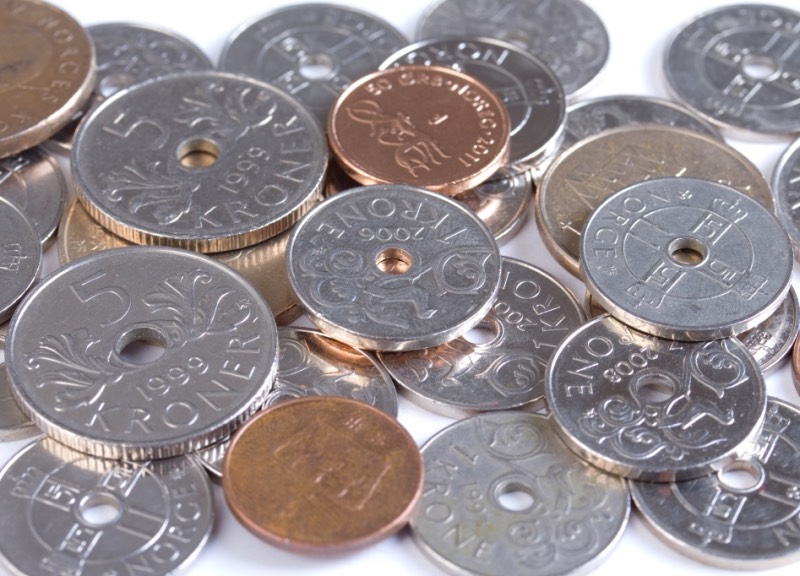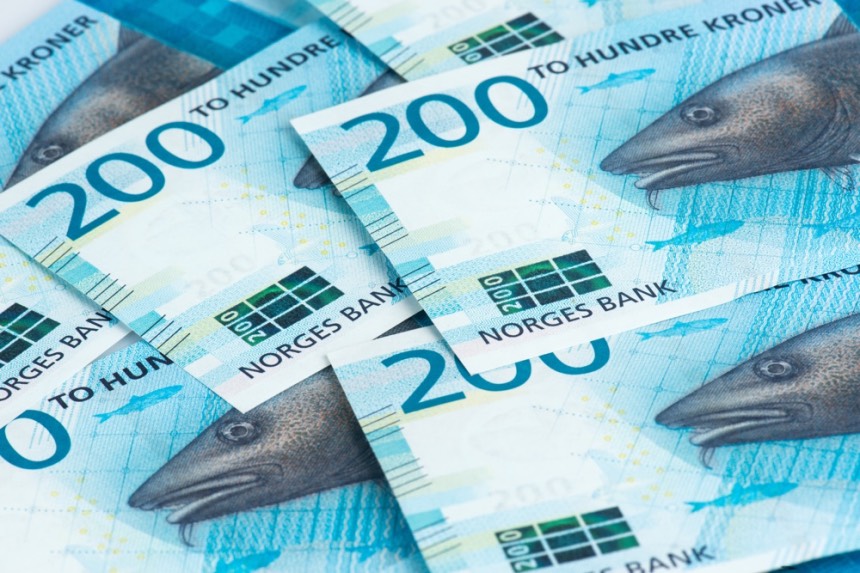Discover how income tax works in Norway before you get any nasty surprises. Find out how much tax you can expect to pay from your salary this year with our handy guide.
If there’s one topic that always kick-starts a debate here on Life in Norway, it’s Norwegian tax. In fact, at a recent in-person talk, I was challenged by a British man who insisted that everyone in Norway pays more than 50% tax.

Nothing I said would disuade him, because he “once knew someone who worked in Norway 20 years ago”! Needless to say, no, we don’t hand over 50% of our income to the state. You can’t convince everyone, so I didn’t try!
Given my role as owner of this website, many people contact me asking how much tax they should be paying. Without knowing their salary details and a bunch of other personal information, it’s a difficult question to answer.
That’s because like many other countries, Norway operates a progressive system for income tax. That means the higher your salary, the more tax you pay on a percentage basis.
However, it's possible to work out your expected tax bill by doing a few calculations. There's plenty of online calculators to help you along the way, too. Most of them are in Norwegian, but they’re pretty simple to figure out. Links below.
But in this article, I’d like to explain a bit of the background to the Norwegian tax system and how your tax bill is calculated. Ready? Let’s dive in!
What is Income Tax Used For?
In Norway, income tax is one of the most important sources of revenue for the state and is used to fund public services such as healthcare, education, transportation, and welfare programs.

The taxes collected are used to fund a wide range of public services:
- Healthcare: Covers hospitals, general practitioners, specialist services, and medication support.
- Education: Funds schools, universities, scholarship programs, and research.
- Infrastructure: Roads, railways, and public transportation.
- Welfare Programs: Pensions, child benefits, unemployment benefits, and sick pay.
- Defense and Law Enforcement: Funding for national security, the judicial system, and crime prevention.
In Norway, income tax deductions also cover what many other countries call council tax. Municipalities receive a portion of income tax revenue, funding local services like schools, healthcare, roads, and waste management.
While some municipalities charge a small amount for other services such as waste collection, most local services are covered by this national and municipal income tax.
The Basics of Norwegian Income Tax
Norway’s income tax system is progressive, meaning that those who earn more pay a higher percentage of their income in taxes. Unlike Britain’s crazy setup, the Norwegian tax year runs January to December.
Your total tax payment is estimated for the year based on your expected annual income. From this, the monthly deductions are calculated. At the beginning of every year, you get a tax deduction card, which outlines your monthly deduction rate.
Credit Cards: After living in Norway for a few years, you’re eligible to apply for a credit card to help you manage your finances.
Check Out Our Guide to Credit Cards in Norway
I say card, but these days the tax deduction card is entirely digital. It’s easy to access via Norway’s digital services, and easy to update if required too.
If you know you’ll be earning more or less than estimated during the year, you are able to make changes to these figures. This helps prevent a big tax bill at tax return time.
If you end up paying too much or little, the difference is settled on the personal tax return the following year.
Your Tax Basis
Income tax is split into various elements, and the basis for calculating these taxes is different. To fully understand your situation, you need to calculate these two figures:

Personal Income: Your total income.
Tax Basis: This basis for taxation is your personal income minus any deductions that you are entitled to. These vary. However, everyone receives a standard deduction (minstefradrag).
In 2025, the standard deduction for employment income is set at 46% of the income, with an upper limit of NOK 92,000. For pension income, the standard deduction is 40%, with an upper limit of NOK 73,150.
The personal deduction is a general base deduction in ordinary income, meaning it applies to all types of income, including salary, pension, capital, and business income. The personal deduction is set at NOK 108,550 in 2025.
An important note for foreign taxpayers: If a person is only residing or staying in Norway for part of the year, the personal deduction is reduced proportionally.
Remember, these so-called ‘deductions' are simply a method to work out your taxable income, or your “tax basis”.
Income Tax Rates in Norway in 2025
Income tax in Norway is split into a base rate and a step tax, allowing for progressive taxation.
The base rate (alminnelig inntekt) of income tax in Norway is 22%. Those who live in Finnmark or Nord-Troms will pay a reduced rate of 18.5%.
In addition, there is a so-called step tax (trinnskatt), sometimes called bracket tax, which is a progressive tax applied at different income levels.
For the first NOK 217,400 of your personal income, you will not pay any step tax. After this, the following rates apply:
- 1.7% step tax on income between NOK 217,401 and NOK 306,050
- 4.0% step tax on income between NOK 306,051 and NOK 697,150
- 13.7% step tax on income between NOK 697,151 and NOK 942,400 (reduced for residents of Finnmark and Nord-Troms)
- 16.7% step tax on income between NOK 942,40 and NOK 1,410,750
- 17.7% step tax on all income above NOK 1,410,751
These higher tax brackets have been adjusted in recent years, leading to increased taxation for high-income earners in Norway.
Social Security Payments in Norway
One of the reasons income tax in Norway is often perceived as high is that social security contributions (trygdeavgift) are deducted from wages at the same time as income tax.

Most employees see one large deduction on their payslip, but this covers both taxes and social security contributions.
As with step tax, national insurance contributions are calculated based on your personal income—your gross income before any deductions.
Do you live in Norway? Managing your credit is important, and new arrivals are especially at risk from issues with their credit and even identity theft.
Get a Free Credit Check in Norway
For 2025, the standard national insurance contribution rate is 7.9% of personal income. If your income is below NOK 69,650, you do not pay any contributions. The rates for self-employed people are different.
This contribution helps fund Norway’s welfare system, including healthcare, pensions, and other social benefits.
How Much Income Tax Will I Pay in Norway in 2025?
As I said before, the final amount you pay will be determined by many factors based on your personal circumstances. However, with the bands outlined above you have all the information you need to get a rough estimate.
If maths isn't your thing or you have unique individual circumstances, check out the income tax calculator offered by the Norwegian Tax Administration. Simply fill in your estimated income, wealth and any relevant deductions. You'll then see an estimate of the tax you have to pay.
For example, a single person born in 1981 earning NOK 700,000 would pay a total of NOK 181,320 in tax deductions, which includes NOK 53,900 social security payment. The same person earning NOK 1,200,000 would pay a total of NOK 406,048.
These examples do not take into account any personal circumstances such as property ownership, debt and interest payments, personal wealth etc.
So, on the NOK 700,000 salary, the snnual tax deduction is approximately 25.9% On the NOK 1,200,000 salary, it’s 33.8%. But we’re not quite finished yet!

It’s relatively straightforward to calculate a rough estimate of your annual tax liability in Norway. However, that doesn’t mean your monthly tax liability will be the same percentage.
Monthly Tax Payments in Norway
That’s because Norway uses a 10.5 month system of taxation, rather than a 12 month one.
You pay half the normal monthly tax in December and zero tax in June. In fact, most employees don't receive normal salary in June. That month is when you receive the holiday pay accrued from the year before.
That payment is not taxed, so typically you'll receive a higher monthly payment in June. Here's how holiday pay in Norway works. It's a good article to read, as the process is quite different from many other countries and confuses many newcomers.
All this means your effective monthly tax deduction is a few percentage points higher than your annual one, to account for the months where you pay zero tax and half tax. This is one of the reasons why people believe tax is so high in Norway.
How to Change Your Tax Deduction Card
As I said earlier, at the beginning of every year, the tax authorities give a ‘tax deduction card' to your employer to let them know how much to deduct each month. This is estimated based on your previous year's income.
If you believe you're paying too much tax, you have two options. Firstly, you can log on to the Skatteetaten website and request a new tax deduction card.
You're able to see your expected annual income, expected yearly tax liability, plus how much you have paid to date. You're able to adjust your expected annual income so that your employer receives a correct tax card.
Alternatively, you can just wait! If you have indeed paid too much tax during the course of a year, you'll receive a rebate through the following year's tax return process.
Other Taxes in Norway
Of course, there are other taxes in Norway. As in other countries, MVA (VAT) is charged on goods and services.
There’s also a controversial wealth tax. This is well worth reading about if you are a high earner, with an annual income of at least NOK 1.2 million.
An Important Note
Please understand, I am not a qualified accountant. This means I will not be able to answer any questions pertaining to your tax situation! I've simply written this article based on published facts and figures from Norway's tax authorities.
Please do not ask personal questions in the comments, and do not share any personal information!
As your own personal tax rate, there are many other factors that could impact the final amount. Things such as whether you own a house or not, your level of pension contributions, and a whole range of other factors can all make a difference.
That being said, I hope this article helps you to understand the tax system a little better.



I see insurance rate is 8.2%. Would that cover all health needs or just medical? Even if it was just basic health insurance sounds like an equitable program to me.
Thought 450k as an average salary sounded a bit low. According to SSB, average monthly salary is 44 160 NOK, which works out to 530k/year.
Can you please give an idea that how the tax basis “Tax basis: 450,000 – 104,450 – 51,300 = 294,200” came out for the Personal income: 450,000kr. I mean what are these numbers 104,450 and 51,300 and how to interpret. Thanks!
Hi, they are the two deductions explained further up in the post. Thanks!
David, is the 104k number not exceeding the mentioned maximum of 100k?
Good spot. The smaller number was the 2019 one, this has been increased for 2020.
Thanks for the great works you being doing. Am a Nigerian I got plan of moving to Norway and I just want to know how much one has to have to sustain himself for 6 months In Norway. And I want to know if there is any safe area with regard to natural disaster in Norway?
Is it possible for you to just put a calculator to caculate tax based on the monthy/yearly salary ?
Thanks for the nice article.
Hi, sorry but I’m a writer not a programmer!
Hey for simple tax calculations can use state site
Here is the link!
https://www.skatteetaten.no/person/skatt/beregn-skatten-din/
Hi David,
can you tell me what to do to get back my 10% foreign basic tax refund I was entitled to in previous 2years, 2017 and 2018… where can one claim that, or see if one has received it under what section? What is it the proper term for it and what is it exactly called.
There is no such refund. There is a 10% deduction, but that is exactly that – a deduction from your total income on which your tax is based. But it replaces other deductions. I do not know if you can resubmit a tax return for previous years – you will have to contact the tax office about that.
Hei David,
Any news about this matter? I am interested aswell.
News about what?
Hi! Peculiar one but as a Brit in Norway with a not so clued up Norwegian partner, I was hoping you could answer a question for me.
On backdated payments, IE stuff you were supposed to be paid but was not, there is a 44% tax for that sum if it is X months old, or older. I remember being explained it previously but I can not remember the age in which these payments stop being taxed this high and start getting taxed at current tax card.
Thanks
No idea sorry, but I’m sure its explained on the Skatteetaten website
Even Norwegians will retire at some point. Is retirement income taxed? If so, at what effective rate?
Awesome and informative post!
Hello David,
I have a friend who work in Norway 3 weeks ago he was detained from going home because he ows taxes and they requested a tax credit certificate grom him. He was on a contract. His account is frozen right now. I will appreciate any advice at this time. Thanks
Hi, I can’t possibly give any advice on such a matter, sorry. I would suggest contacting a lawyer.
Hi! Can you please advise which would be the tax treatment for a second (full time) and a third (part time-on call) job. I mention that my first job is also part time – on call. Thank you!
Hi,
What happens to the national insurance, if that a employee leaves Norway after working short period of time.
Thanks
You should contact Skatteetaten and/or NAV to ask them as this depends totally on your personal circumstances.
Hi as a Brit new to working in Norway I have secured a part time job, but am just about to start working a second part time role too, will the second job be taxed at a higher rate?
Thank you!
If your overall income goes up then you will be taxed higher overall, yes. It’s up to you to report the change in expected income to get a new “tax card” that your employers can use to deduct the correct amount. You can do this on the Skatteetaten website. If you don’t, you’ll get a big tax bill at tax return time next time year 🙂
Hi
I am not able to submit RF1209 which allows an exemption from paying 8.2% social secuity tax. Hence paying full tax this year.
Can I get a refund of the Social Security tax next year or is it lost forever?
Hi David, thank you for this simple, but complete, explanation.
I was doing the math using your instructions and I found the numbers a bit different when using the simulator from the state site that Edvard posted.
Nevertheless, I am curious to find several sites that state much higher taxes on Norway, like 10% higher, to values that are normal arround 40%, or higher, for average wages.
In reality taxes are lower than stated in the documents. But this is due to deductions that are on personal level depending on you family finance, loans, capital, etc.
Practically on my pay slip is always written 44% but I never paid more than 37%.
Does anybody know what tax card 7100 is?
Several of my work colleagues are all on similar packages and are all on tax card 7150 however when I view my tax card I am on card 7100. Any idea what the difference is between tax cards 7100 and 7150 is? The obvious answer is a pay more tax, but with similar packages why would this be the case? Am I paying too much taxes or are my colleagues paying too little.
It’s impossible for anyone to tell you that except the tax authority. But the tax card isn’t how much tax you pay – it’s how much you get deducted from your pay. The final settlement then gives you a refund or an invoice depending on whether you have overpaid or underpaid. If you think you’re already overpaying, you can always request a new tax card by using the form on Skatteetaten, but you’ll only be issued one if your circumstances have changed (e.g. expected salary, new deductions etc)
Hi. You can check the tax level for the 2 tax cards and see which one would be in your advantage. Then check if possible the situations of your colleagues. Married/ wife got a job or not/children/ loans/ debts/ capital, etc. Unfortunattely I don’t know where you could find the way Skat will asign a certain tax card to you but maybe some of the readers here, have more info.
Very informative explanations, thank you very much!
Do you know if there is a difference in tax paid on income if you are self-employed? I seem to have paid a lot more than the percentages you mention in the examples.
Hi, yes there are some differences, most notably self-employed people pay a higher social security. That’s because in ‘regular’ employment, the employee only pays part of the social security, the rest is covered by the employer. I’m working on a new article about tax for self-employed people at the moment.
Good afternoon David. Can i ask you regarding tax for 2020. My income was total (gross) approx. 510 000 NOK. I have paid – 31.74% in tax (for 2020) but later got extra tax – in total 47%.
Can it be? I’m on 7150 table. I think its kind of mistake.
Thanks for you help.
I can’t help with personal tax matters, I’m a writer, not an accountant. Check your tax assessment – all the detail is on there.
Are the taxes you cited the only taxes or are the state/provincial and local taxes separate from federal taxes?
There are no state taxes in Norway because there are no states – it isn’t a federal system. Some of the money raised through income taxes will go to county/local municipalities but that is all done “behind the scenes”
Is the National Insurance Contributuon a part of the income tax in Norway? On Tax Return form this contribution is shown in Income Tax section. It’s also added to withholding tax ammount.